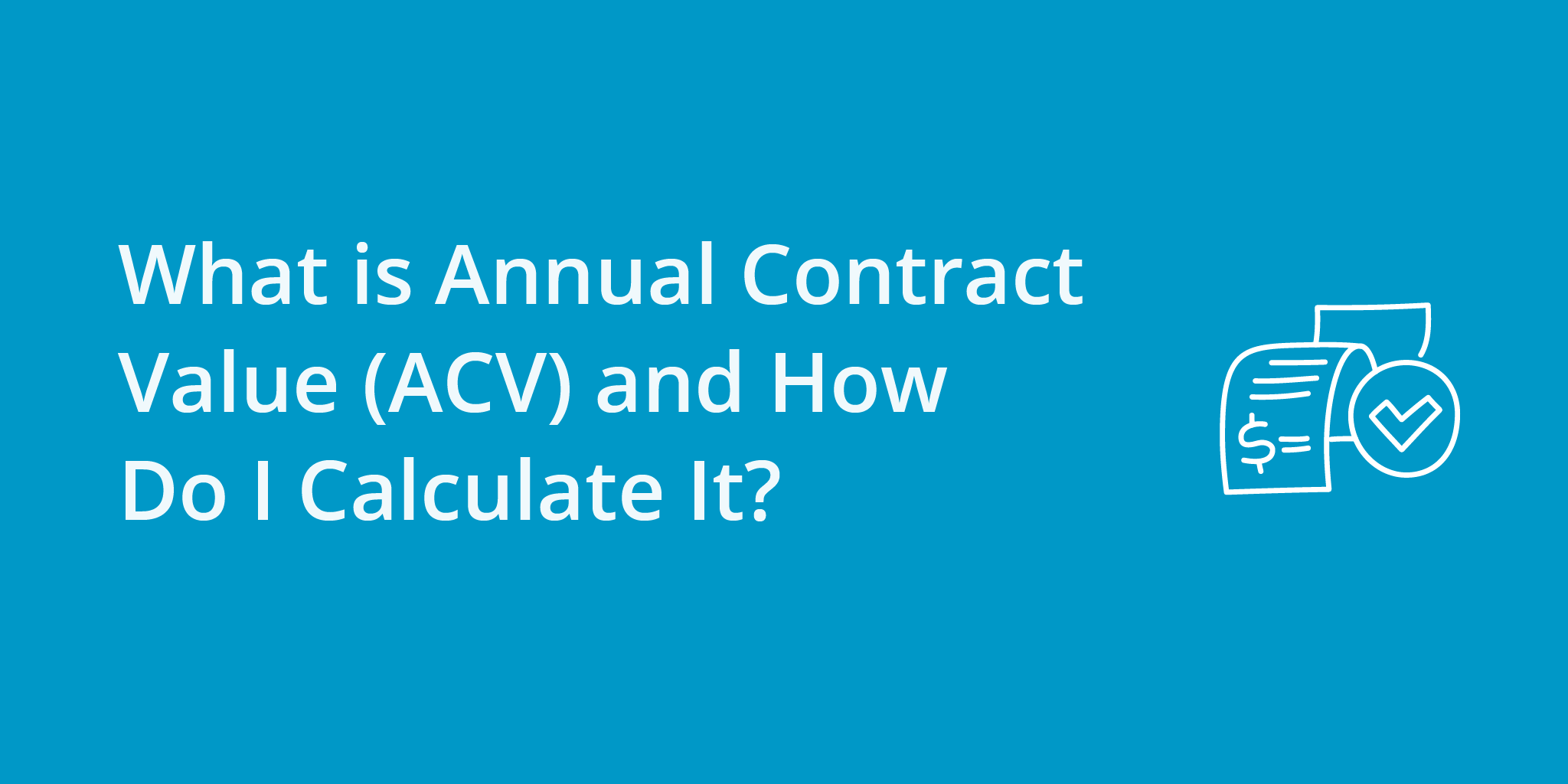As the software-as-a-service (SaaS) industry continues to grow, businesses are constantly looking for ways to measure and optimize their subscription-based revenue models. Annual Contract Value (ACV) has emerged as a key metric in this effort.
ACV measures the total annual value of a customer’s contract or subscription and is used by SaaS companies to understand the revenue generated by each customer, forecast future revenue, and evaluate the performance of sales and marketing efforts.
By understanding and using ACV, companies can make data-driven decisions about pricing, packaging, and customer acquisition that can help them maximize revenue and growth.
In this article, we will take a closer look at what ACV is, how to calculate it, and how it can be used to improve business outcomes in the SaaS industry.
- What is Annual Contract Value (ACV)?
- How To Calculate Annual Contract Value
- Why is ACV Important for Sales and Marketing Teams?
- Strategies to Increase ACV

What is Annual Contract Value (ACV)?
Annual Contract Value (ACV) is a metric often used in the software-as-a-service (SaaS) industry to measure the total annual revenue generated by a customer’s subscription or contract. ACV is calculated by multiplying the recurring revenue generated by a customer’s subscription or contract over the course of a year.
For example, if a customer signs up for a monthly subscription of $100, their ACV would be $1,200 per year ($100/month x 12 months). ACV is important for SaaS companies because it helps them understand the total revenue they can expect to generate from a customer over a year, which can be used for forecasting and planning purposes. It can also be used to evaluate the performance of sales and marketing efforts, as well as to determine the lifetime value of a customer.
How To Calculate Annual Contract Value
The formula for calculating Annual Contract Value (ACV) is:
ACV = (Total contract value – One time fees) / Number of years in the contract
In other words, to calculate the ACV, you divide the total contract value (less any one-time fees) by the number of years covered by the contract. For example, if a customer signs a two-year contract worth $24,000 without one-time fees, the ACV would be $12,000 per year ($24,000 / 2 years).
If the contract includes recurring revenue, such as a monthly or quarterly subscription fee, you can also calculate the ACV by multiplying the recurring revenue by the number of billing cycles in a year. For example, if a customer signs up for a monthly subscription of $100, the ACV would be $1,200 per year ($100/month x 12 months).
Why is ACV Important for Sales and Marketing Teams?
Annual Contract Value (ACV) is an important metric for sales and marketing teams in the software-as-a-service (SaaS) industry. Here are a few ways ACV is used:
- Sales forecasting: Sales teams can use ACV to predict revenue for a given period based on their pipeline of deals. They can estimate the total ACV of all deals in the pipeline and forecast revenue based on the likelihood of closing those deals.
- Targeting high-value customers: Sales and marketing teams can use ACV to identify high-value customers that are likely to generate the most revenue. This helps them prioritize their efforts and focus on the most valuable leads.
- Evaluating sales performance: ACV can be used to evaluate the performance of individual sales reps or the sales team as a whole. Sales managers can compare the ACV of each rep’s deals and identify areas for improvement.
- Setting pricing and packaging: ACV can inform the pricing and packaging of SaaS products. Companies can use ACV data to determine the most profitable pricing and packaging models.
Overall, ACV provides a clear understanding of the revenue generated by each customer and helps sales and marketing teams make data-driven decisions about targeting, forecasting, and pricing.

Strategies to Increase ACV
Increasing ACV requires a combination of effective sales and marketing strategies, as well as innovative pricing and packaging models. By experimenting with different approaches and continually monitoring and analyzing customer behavior, businesses can optimize their ACV and achieve long-term revenue growth. There are several strategies that businesses can use to increase Annual Contract Value (ACV) and maximize the revenue generated by each customer. Here are a few:
- Upsell and cross-sell: One effective way to increase ACV is to upsell or cross-sell customers on additional products or features. For example, a SaaS company might offer a higher-tier subscription that includes more advanced features or services.
- Offer annual or multi-year contracts: By offering customers the option to sign up for longer-term contracts, businesses can increase the overall value of each contract and boost their ACV.
- Implement usage-based pricing: Usage-based pricing models tie the cost of the subscription to the amount of usage, which can increase the ACV for customers who use the product frequently.
- Price bundling: Offering bundled packages of products or services can encourage customers to purchase more products and services at once, resulting in a higher ACV.
- Target high-value customers: Focusing sales and marketing efforts on high-value customers can increase the ACV of the customer base overall. By identifying and targeting the customers who are most likely to generate the highest revenue, businesses can maximize their ACV.
Final Thoughts
In conclusion, Annual Contract Value (ACV) is a critical metric for companies in the software-as-a-service industry. By measuring the total annual value of a customer’s contract or subscription, ACV provides valuable insights into revenue generation, cucustomer lifetime valueand forecasting.
By understanding and using ACV, businesses can make data-driven decisions about pricing, packaging, and customer acquisition that can help them maximize revenue and growth. As the SaaS industry continues to evolve, ACV will remain an essential tool for companies looking to optimize their subscription-based revenue models. By staying informed about ACV trends and best practices, businesses can stay ahead of the curve and succeed in the competitive SaaS landscape.



